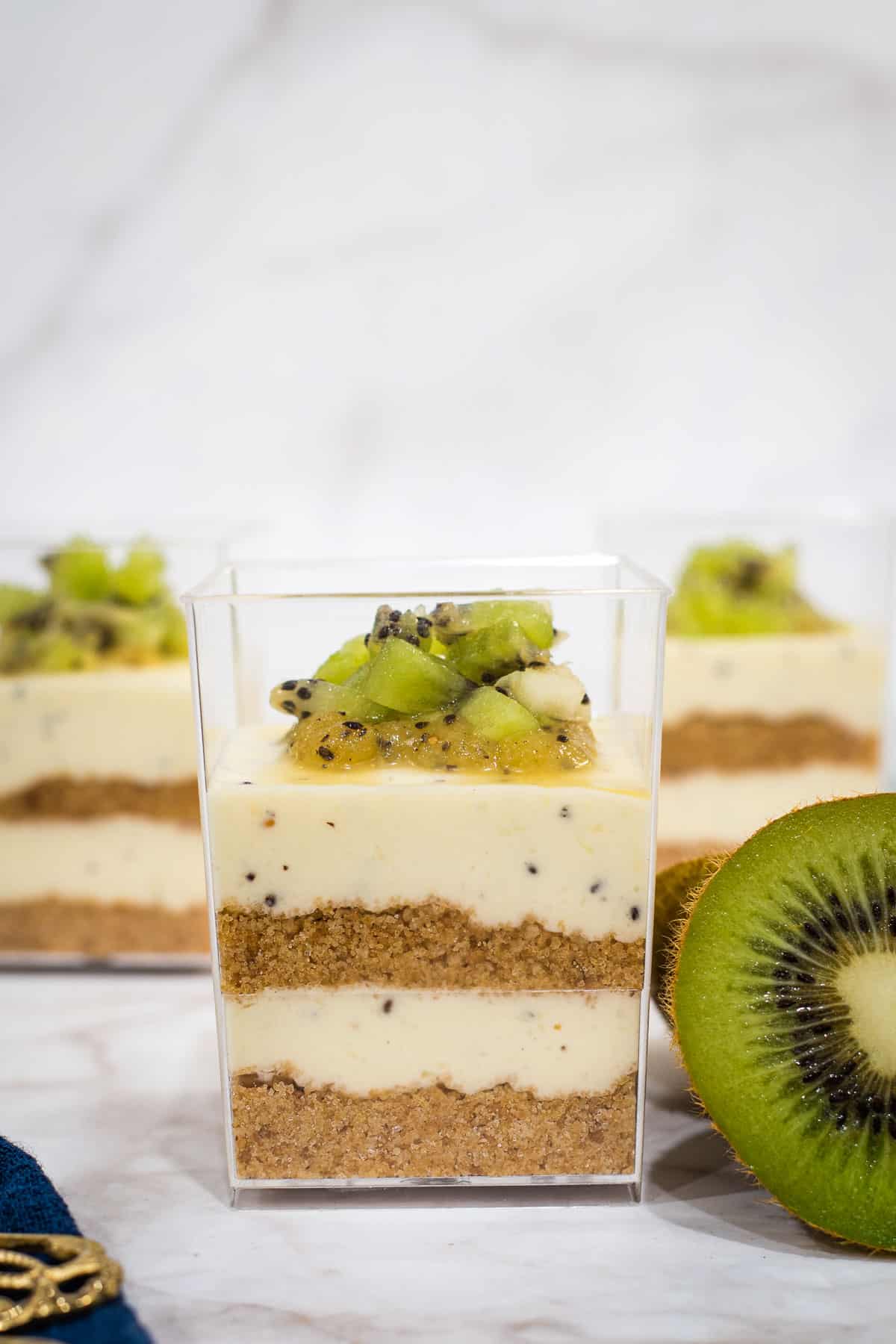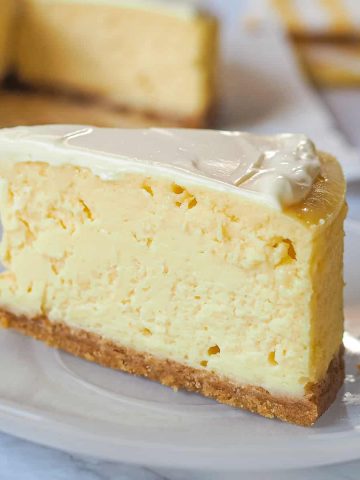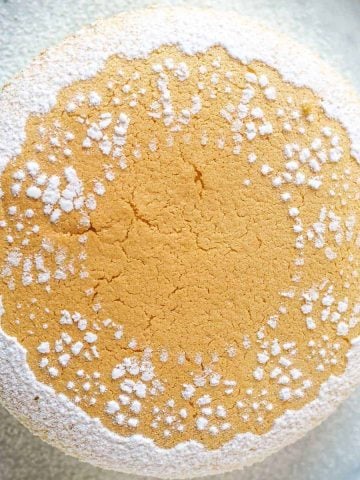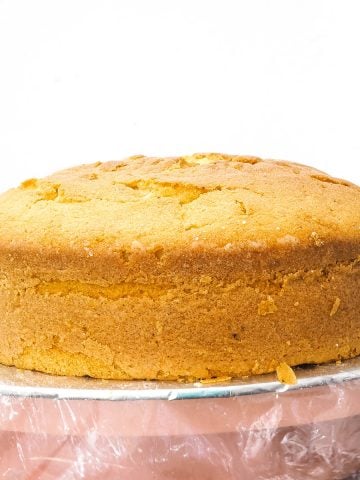If you are a cheesecake fan, this blog post on how long can cheesecake sit out will be very useful.
Cheesecakes, with their rich flavor and creamy texture, is undoubtedly a much loved dessert for many. Whether it's a classic New York-style cheesecake, an Italian cheesecake, or a unique flavor creation like this Durian cheesecake or Pandan cheesecake, cheesecakes have a special place in our hearts.
However, when it comes to storing and leaving cheesecake out, there are important factors to consider for both taste and food safety.
In this blog post, I'll share with you tips and guide on how to store cheesecakes, and why this is particularly important for cheesecakes.

Jump to:
And if you would like to check out my collection of awesome cheesecake recipes, check out my cheesecakes collection page.
How long can cheesecake sit out?
- The short answer to the question of how long cheesecake can sit out is that it should not be left unrefrigerated for more than two hours.
- Beyond this time, the risk of bacterial growth and foodborne illnesses increases. This makes it essential to handle and store cheesecakes properly.
Types of cheesecakes
1. Baked Cheesecakes
- Baked cheesecakes are a classic and traditional form of this decadent dessert. They are made by combining a luscious cream cheese-based filling with other main ingredients such as eggs, sugar, sour cream, heavy cream and other flavorings.
- The mixture is then poured onto a crust, often made from crushed graham crackers or cookies, and baked in springform pan and water bath in an oven. The baking process gives these cheesecakes a firm yet silky texture. And it creates a lightly golden, slightly cracked surface that adds to its rustic charm.
- Baked cheesecakes are known for their smooth and creamy consistency, with a slightly denser texture compared to unbaked versions. The flavors of a baked cheesecake tend to develop and deepen as they are baked in the oven, resulting in a rich and decadent dessert.
- For best results, baked cheesecakes often require some chilling time in the refrigerator after baking. This is part of the cooling process to set it properly and achieve the perfect sliceable texture.
- Here are some my collection of baked cheesecakes you should check out:
2. Unbaked or No-Bake Cheesecakes
- Unbaked or no-bake cheesecakes offer a convenient and fuss-free alternative to their baked counterparts. These cheesecakes do not require baking and are set in the refrigerator instead.
- They are typically made by combining cream cheese with a number of other ingredients such as sweetened condensed milk or gelatin or agar agar and various flavorings. The mixture is then poured onto a cookie or crumb crust and chilled until it sets.
- No-bake cheesecakes are known for their silky and light texture, often resembling a mousse or pudding-like consistency. They have a creamy and smooth mouthfeel that melts in your mouth with each spoonful. The flavors in no-bake cheesecakes are fresh and vibrant, as they are not exposed to the heat of baking.
- These cheesecakes are often quick and easy to prepare, making them a popular choice for those who crave a delicious dessert without the need for an oven. They can be customized with various toppings and garnishes to add extra taste and visual appeal.

Storing Cheesecake
- Unbaked cheesecakes require to be refrigerated at all times for them to hold their shape. If left at room temperature, they will tend to melt. They also taste better when chilled so it is often not a problem when it comes to handling unbaked cheesecakes.
- Nevertheless, both baked and unbaked cheesecakes require similar way of handling where food safety is concerned.
1. Freshly Baked Cheesecake
- For baked homemade cheesecake, it typically requires to be refrigerated for at least 4 hours after baking to firm up the texture. For this purpose, you can wrap your cake in plastic wrap or place it in an airtight container and refrigerate.
- Refrigerating the cake promptly will better maintain its freshness. Refrigerated cakes are best consumed within 3 to 5 days for optimal taste and quality.
- If you plan to keep the cheesecake longer, you can freeze it. Simply wrap the plastic wrapped cake with aluminum foil to provide added protection against freezer burn.
2. Freshly made no-bake cheesecake or cheesecake cups
- These should be kept refrigerated immediately after baking.
- Keep them in airtight containers to prevent them from becoming dry and to avoid them from absorbing other odors from the fridge.
3. Leftover Cheesecake (homemade or store-bought cheesecake)
- If you have leftover cheesecake, it's crucial to store it correctly. Slice the cheesecake into individual pieces or wrap the entire cake tightly with plastic wrap or foil.
- Do note that if it has any topping on it, wrapping with a plastic wrap may not be very practical. In such instances, you can place the cake in an airtight container and refrigerate it.
- The purpose of wrapping the cake is to prevent it from becoming dry and to prevent it from absorbing the odors from the fridge. Properly stored, it can be refrigerated for up to 3-5 days.
- To freeze leftovers, wrap the cake in a plastic wrap followed by a foil and place it in a freezer bag. You can keep the cake frozen for a good one to two months. Thaw frozen cheesecake in the refrigerator overnight before consuming.
- I do not recommend freezing cheesecake with toppings such as creams and fruits as these may not freeze well and might affect the taste of the cake after thawing.
Why refrigeration is important
- The cooling process in the refrigerator after a cheesecake is baked allows the cheesecake to set properly, resulting in a desired texture and consistency. Similarly for unbaked cheesecakes. The cooling process helps it to set.
- Other than for texture, refrigeration is essential for cheesecakes due to the inclusion of dairy products and the importance of food safety. Cheesecakes contain perishable ingredients, such as cream cheese and other milk products, which are prone to spoilage if left unrefrigerated.
- Proper refrigeration helps inhibit the growth of harmful bacteria and extends the shelf life of the cheesecake. When it comes to leftover cheesecake, refrigeration is the general rule. Storing a fresh cheesecake in the refrigerator helps maintain its quality and prevents the growth of bacteria that could lead to food poisoning.
- Since cheesecakes often contain heavily dairy-based ingredients and milk products, leaving them unrefrigerated for a long time increases the risk of spoilage and the growth of dangerous bacteria (and the risk of food poisoning). It is crucial to keep cheesecakes refrigerated to ensure food safety and reduce the risk of foodborne illnesses.
- Considering the perishable nature of cheesecake ingredients, refrigeration plays a significant role in preserving the freshness and extending the shelf life of the dessert. Properly refrigerated cheesecakes with their delicate balance of dairy and egg-based ingredients can be enjoyed with peace of mind, knowing that the risk of spoilage and foodborne bacteria is minimized.
General tips
- If you plan to transport a cheesecake or have it sit out for a short time, use a cooler box to help maintain its temperature.
- Flourless or vegan cheesecakes may have different storage requirements, so follow specific recipe instructions.
- Keep in mind that cheesecakes with cream cheese frosting, whipped cream toppings, fruit toppings, or other toppings may not be very suitable for freezing.
Food safety guidelines
- Follow the guidance of the U.S. Department of Agriculture (USDA) and local health regulations for proper handling and storage of perishable foods.
- Pregnant women, young children, and individuals with weakened immune systems should exercise caution when consuming desserts with unrefrigerated dairy ingredients.
And that's pretty much my tips and guide on handling and storing cheesecakes. By following the best practices for storing both freshly baked and leftover cheesecake, you can enjoy this delectable dessert while minimizing the risk of foodborne illnesses.
❤️More tips and techniques you will love❤️
Happy Baking 🙂











Leave a Reply